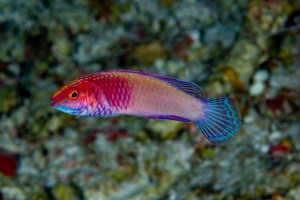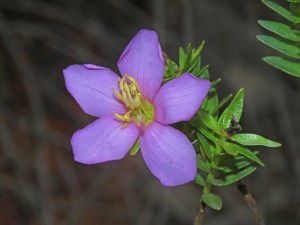2022 WAS A PRETTY DECENT YEAR FOR SCIENCE. A FUSION BREAKTHROUGH COULD REVOLUTIONIZE CLEAN ENERGY. THE JAMES WEBB TELESCOPE IS SHOWING US PARTS OF THE UNIVERSE WE’VE NEVER SEEN. AND A FEW MORE BRANCHES GREW ON THE TREE OF LIFE, AS SCIENTISTS NAMED NEW PLANT, ANIMAL AND FUNGI SPECIES.
RESEARCHERS AT THE CALIFORNIA ACADEMY OF SCIENCE, AND THEIR PARTNERS AROUND THE WORLD, ADDED 146 NEW ENTRIES TO THE LIST OF KNOWN SPECIES. THE NEW LIFE WAS FOUND ON SIX CONTINENTS AND IN THREE OCEANS AROUND THE GLOBE.
THE ACADEMY FOUND NEW FLOWERS ON ISOLATED BRAZILIAN MOUNTAINTOPS. THE MINNESOTA MOUNTAIN ONION WAS DISCOVERED GROWING ON TWO PEAKS IN CALIFORNIA. THE ROSE-VEILED FAIRY WRASSE ISN’T JUST NEW TO SCIENCE, THE COLORFUL FISH IS ALSO THE FIRST TO BE DISCOVERED BY A SCIENTIST FROM THE MALDIVES.
SOME HIGH SCHOOL STUDENTS IN SAN FRANCISCO HELPED DISCOVER TWO NEW SPECIES OF SCORPIONS THAT LIVE IN DRY LAKE BEDS. IT’S AN IMPORTANT DISCOVERY, BECAUSE ONE OF THOSE SPECIES ONLY LIVES ON A NARROW, MILE-LONG STRIP OF UNPROTECTED LAND. SO, WITHOUT PROTECTIONS, A SINGLE CONSTRUCTION PROJECT COULD WIPE OUT THE ENTIRE SPECIES.
LONDON’S NATURAL HISTORY MUSEUM ALSO DESCRIBED AND NAMED 351 NEW SPECIES TO SCIENCE. THE MUSEUM NAMED A HUGE DIVERSITY OF PLANTS AND ANIMALS, FROM STICK INSECTS TO NEW DINOSAURS. AND NOT THAT ANYONE WANTED THEM, BUT 85 NEW SPECIES OF WASP WERE ALSO DISCOVERED.
THE CALIFORNIA SCIENCE ACADEMY’S CHIEF OF SCIENCE, DR. SHANNON BENNET, SAYS BY UNCOVERING AND DOCUMENTING NEW SPECIES, HUMANS CAN BETTER LEARN HOW TO PROTECT THE PLANET’S BIODIVERSITY, AND ENSURE IT WILL REMAIN RICH FOR GENERATIONS TO COME.












